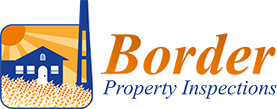Deck Safety
Deck safety is something an inspector needs to pay close attention to. It is important to remember that a home inspection is not a code inspection. That means the inspector is not trying to go through the home and point out every code infraction. The deck is one area where the line between the home and code inspection may intersect. As a home inspector I try to look at the deck in terms of safety for those using it. I don’t know if there will be seniors or infants on the deck so I personally point out issues that may lead to a fall or trip on the deck.
When looking at the deck I pay close attention to the deck surface for rot or other openings that could trip someone. I also look at the railing to see if there are any openings larger than 4”. I chose 4” because that is what is the current standard or code as the maximum opening between spindles. If I notice that there are openings of five or six inches I simply state that the deck could be made safer if it was up to the current standard of 4”. Most of the time the clients are not at all concerned but I feel it is my duty to forewarn them just in case they may feel it is important enough to make the changes.
There are other common issues with decks that I look for. The biggest safety issue in my mind is the use of bench seating on the deck. These benches usually have ample room for children to crawl under and over the edge of the deck. Worse yet the top of the bench back is often very high off the ground. A small child of four or five can lean over or climb over the back and fall several feet to the ground. The rule for bench seats is that if the deck surface is under six feet off the ground the back of the bench seat must extend 36” above the seat itself in a manner that would not allow a child to climb over it. If the deck is over six feet the back of the bench must be 42” over the seat.
The underside of the deck should be examined to check for poor construction methods and attachment to the home itself. I do not concern myself with the code in particular as I am primarily concerned about how strong the deck is and if it looks unsafe. I always say there are several ways to build a deck, many of them wrong. But of those that are wrong, the majority are perfectly safe and strong. Remember code enforcement has not been around forever and many of the old decks are fine even if they don’t necessarily meet the standards set forth in today’s code.
Some other areas of deck safety are loose or missing railings. If the railing is rotting and about to fall off it is important to note that in the inspection. Similarly if the railing is missing it is definitely a fall hazard. Building steps is one of those tough jobs that requires a bit of math. Many homeowners can’t seem to master the concept and therefore end up with a set of steps that are either too steep, have irregular tread width or have different riser heights. The brain will often develop a pattern when treading on steps and you place your feet where your brain expects the next step to be. The problem is, it is not where it should be and down you go. It’s amazing that only one inch change in riser height or tread depth can cause a nasty fall and even death.
Finally what the deck is mounted on matters. If the deck is freestanding or attached on only one side to the home, it can usually be placed on patio blocks and 4×4’s. Today we see a lot of the concrete deck blocks in use which help add stability. If the deck has walls and a roof it is likely best to have the deck mounted on sona tubes buried well below the frost level. This ensures that the walls of the porch or deck move at the same rate as the home. It is important as well to look at the span of the stringers to see if the deck support posts are adequate and enough supports are being used in comparison to the deck size. If the deck is built with the lumber touching the ground it is usually not a good sign. If the lumber is not pressure treated outdoor wood it is also not good as rot will set in very early in the life of the deck. So my advice when evaluating a deck is to look at all these things closely and always ask yourself if the deck is safe and look for problems such as those mentioned above as well as several others I could mention.

Recent Comments